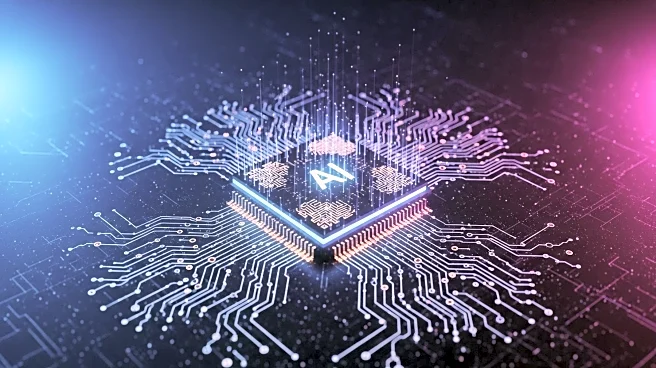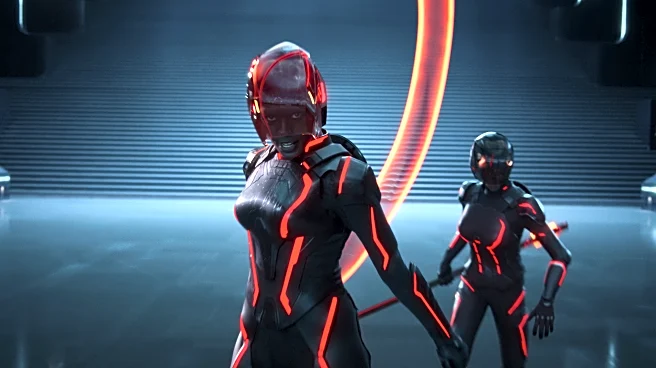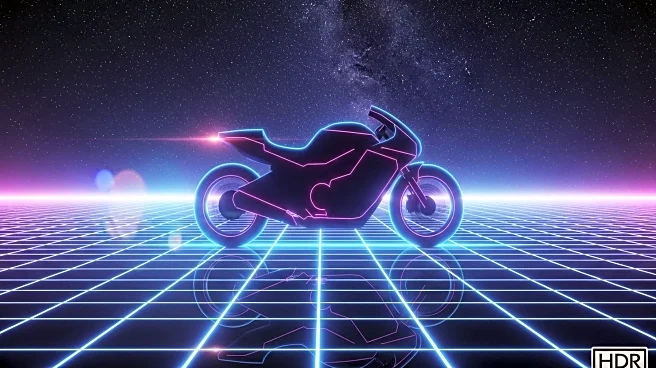What's Happening?
The film 'Tron: Ares' concludes with an end credits scene that links the franchise's past to its future. Directed by Joachim Rønning, the film is the third installment in the Tron series, following 'Tron' (1982) and 'Tron: Legacy' (2010). The scene features Julian Dillinger, played by Evan Peters, activating his identity disc in the digital world, hinting at his potential return as a villain. The film also teases a future connection between Ares, portrayed by Jared Leto, and Quorra from 'Tron: Legacy,' suggesting possible future storylines.
Why It's Important?
The end credits scene serves as a bridge between the original Tron films and potential future installments, maintaining continuity within the franchise. By introducing new narrative possibilities, 'Tron: Ares' keeps the franchise relevant and engaging for fans. The film's exploration of AI and digital worlds reflects broader societal themes related to technology and innovation. As the franchise evolves, it may continue to influence discussions on AI ethics and the impact of digital advancements on human life.
What's Next?
The potential for future Tron films depends on the reception of 'Tron: Ares' and its box office performance. If successful, the franchise may expand on the narrative threads introduced in the end credits scene, exploring new character dynamics and technological themes. The continuation of the franchise will likely be influenced by audience demand and industry trends.
Beyond the Headlines
The film's narrative raises questions about the ethical implications of AI and digital worlds, encouraging viewers to consider the consequences of technological advancements. By linking past and future storylines, 'Tron: Ares' underscores the importance of continuity and innovation in storytelling.











